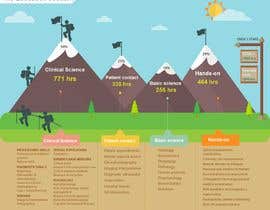The Effect Of Stance On Pain In The Back: Guidelines For Keeping Excellent Positioning Throughout Your Daily Routine
The Effect Of Stance On Pain In The Back: Guidelines For Keeping Excellent Positioning Throughout Your Daily Routine
Blog Article
Published By-Kragh Bennett
Preserving appropriate position isn't just about sitting up directly; it has to do with aligning your body in a way that sustains your spine and decreases the threat of neck and back pain. The method you sit, stand, and relocate throughout the day can dramatically impact your spine wellness. But how specifically can you ensure excellent placement continually, also throughout busy days loaded with different tasks? Let's dig deeper right into the subtle yet impactful adjustments you can make to your daily regimen to maintain your back happy and healthy.
Value of Appropriate Stance
Correct stance is critical in preserving a healthy back and protecting against pain. When you rest or stand with excellent stance, your back is in positioning, minimizing strain on your muscles, tendons, and joints. This positioning permits the body to disperse weight equally, protecting against extreme stress on particular locations that can bring about pain and pain. By keeping your spinal column effectively straightened, you can likewise boost your breathing and digestion, as slouching can compress organs and limit their performance.
Moreover, keeping mouse click the following webpage can improve your general look and positive self-image. When you stand tall with your shoulders back and head held high, you exhibit confidence and show up more friendly. Excellent stance can also make you really feel extra invigorated and sharp, as it advertises appropriate blood circulation and enables your muscular tissues to function effectively.
Including proper position into your daily routine, whether resting at a workdesk, walking, or working out, is necessary for preventing pain in the back and promoting general well-being. Bear in mind, a tiny adjustment in how you hold on your own can make a substantial distinction in exactly how you feel and operate throughout the day.
Common Postural Mistakes
When it comes to keeping great position, numerous individuals unconsciously make usual errors that can add to neck and back pain and discomfort. Among the most common mistakes is slumping over or hunching over while resting or standing. This position places too much stress on the spine and can bring about muscle discrepancies and pain in the long run.
One more typical blunder is overarching the reduced back, which can squash the all-natural curve of the back and cause pain. Furthermore, crossing legs while sitting may really feel comfy, however it can produce an imbalance in the hips and pelvis, causing postural concerns.
Utilizing a pillow that's also soft or also firm while sleeping can likewise affect your positioning and add to neck and back pain. Finally, constantly craning sharp pain lower back to consider displays or readjusting your placement often can strain the neck and shoulders. Being mindful of these usual postural errors can aid you keep better alignment and reduce the risk of pain in the back.
Tips for Correcting Positioning
To enhance your alignment and decrease pain in the back, it's vital to concentrate on making small modifications throughout your day-to-day routine. Begin by being mindful of your pose. When resting, guarantee your feet are level on the floor, your back is straight, and your shoulders are kicked back. Prevent slouching or leaning to one side. Use ergonomic chairs or cushions to support your reduced back.
When standing, distribute your weight evenly on both feet, keep your knees slightly curved, and embed your pelvis. Involve your core muscular tissues to sustain your spine. Take breaks to stretch and walk if you have a less active task. Include exercises that reinforce your core and back muscular tissues, such as slabs or bridges.
While sleeping, use a cushion that supports the all-natural curve of your neck to keep proper back alignment. Avoid sleeping on your stomach, as it can strain your neck and back. By bearing in what causes lower back pain and making small adjustments, you can progressively correct your placement and relieve back pain.
Conclusion
Remember, keeping good position is vital to preventing pain in the back and promoting back health. By being mindful of your alignment, distributing weight uniformly, and involving your core muscle mass, you can reduce stress on your back and decrease the threat of pain and injury. Incorporate ergonomic assistance, take normal breaks to stretch, and strengthen your core and back muscular tissues to maintain proper alignment throughout the day. Your back will thank you for it!
